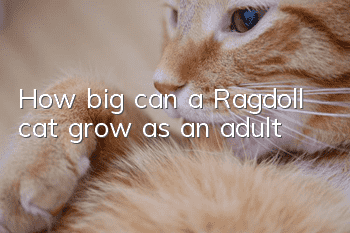How to train a cat effectively? Cat training methods!

How can cat training be effective? Contrary to what we usually think, cats are actually willing to be trained and are very sensitive to these trainings. But remember, cats are different from dogs. They think differently and require different training rules. The foundation of effective training for cats is understanding how they think. The world of cats is more three-dimensional.
Cat Training: Unconscious Training
You may not realize that your kitten has responded to your unintentional training. Does it dart into the kitchen when it hears the sound of a can being opened? If so, that would suggest it already knows the sound portends a delicious meal. In the early 20th century, Russian biologist Ivan Pavlov discovered while studying dog behavior that if you rang a bell when feeding dogs food, the dogs would salivate when they heard the bell ringing.
Cat Training: Using Rewards and Punishments
Cats respond to both rewards and punishments because they are a part of nature, such as patient rounding up Get rewarded - prey. Similarly, when a cat wants to eat in the morning, he will first touch your face with his paws. If you don't move, he will hit you gently, and then hit you hard; if you are still lying still, he will hit you violently. Hit you, and eventually its patience will be rewarded.
Cats learn to recognize different sounds from an early age, and they have strong articulation abilities. It makes simple purrs, more difficult meows, and vicious hisses and purrs. Although cats have trouble learning to understand human predictions, whether they are soft sounds of reward or scolding. You might as well add a stern "no" when punishing it, and slowly the word "no" can restrain the kitten's behavior
Cat training: how to start
Lively short-haired cats learn things faster than silent long-haired cats. Kittens lack attention span and older cats are not interested in training. Cats aged 4 months are easiest to train, but only cats that are accustomed to management are willing to be trained. Training of 1 to 2 minutes is most suitable, but 5 minutes is a bit long.
"Clicker training and name training
Training with a clicker that makes a clicking sound is positive reinforcement A way of training. Let the gadgets in your hand click and click while your colleagues feed the cat. The sound will become a signal and give the cat a quick feedback message: what it should do.
Choosing the right time to click is the key to training. Feed the cat first, then add a click when it starts eating. After repeated training, you can attract the cat's attention as long as you shake the clicker and make a sound. It's also a good idea to shake the bottle with the pills in it, and then shake the bottle to make a sound immediately after giving the cat food.
AlsoCall the cat's name when you reward it. Calling its name will attract its attention.
Cat training: keep the prize close at hand
If using a "clicker" for training, read the instructions carefully to understand how and when to use it . Timing is of the essence, sounding too early or too late will make training more difficult.
Keep food handy. Choose something your cat likes best. Delicious, meaty baby food can be used to inspire your cat to "paw" or some other paw-training action.
Hand-raising training
This is actually skill training - easy and fun for cats. You'll need a teasing toy, such as a small feather attached to a stick with a short string. The goal is to get your cat to alternate between raising his paws.
Suppose the kitten's name is Big Fat. Let it sit first, and then keep shaking the small toy above its head. When it raises its front paws to touch the small toy, quickly say: "Big fat, raise your hand" and give the cat food as a reward. If it is equipped with a clicker, it will click a few times after giving the cat food.
When Big Fatty realizes that "raising his hand" can get a reward, he will happily raise his front paws whenever he hears you say "raising his hand". Gradually stop using the toy and simply stretch your hand over its head.
- How to treat pet cats suffering from scabies?
- What should I do if the kitten always bites people?
- What are the causes of hematuria in cats? Does hematuria in cats mean urethritis?
- How to tell if a kitten is hungry
- What should I do if my cat blows the air conditioner and has loose stools? About cats with diarrhea and loose stools!
- Why can’t you keep a completely black cat?
- What can a three-month-old British Shorthair cat eat?
- Jinjila is breathing heavily. Is she sick?
- What should you do if your cat wets the bed? Teach you how to deal with it!
- What to do if a cat has a stress reaction? How to relieve cat’s stress response?



